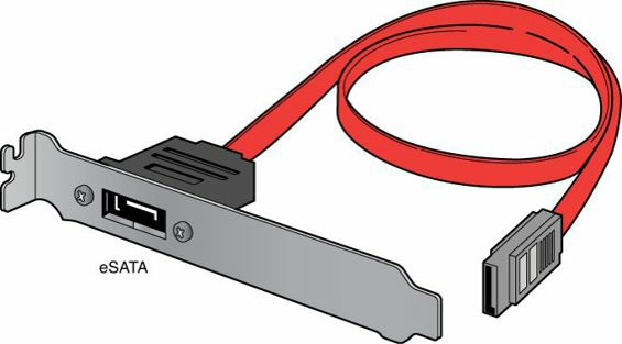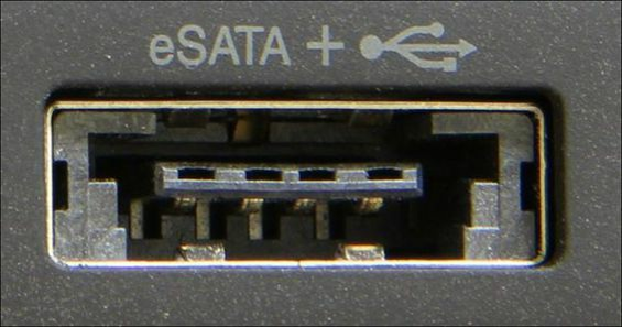Hardware Reference
In-Depth Information
Figure 7.14. SATA to eSATA bracket assembly for adding eSATA ports to a system.
Power Over eSATA (eSATAp)
One drawback to eSATA over USB is that eSATA does not provide power. To rectify this, several
manufacturers got together and informally created the eSATA USB Hybrid Port (EUHP) that
combines USB and eSATA ports into a single physical connector. The SATA International
Organization (SATA-IO) is working to make this an official standard called the Power Over eSATA
(eSATAp) specification.
An eSATAp port is basically both a USB port and an eSATA port combined in one single connector
(see
Figure 7.15
)
. These ports will normally be identified with an “eSATA + USB” notation. They
accept standard USB or eSATA cables, and when attached, the proper connections will be made for
the desired interface to function. A third option is to plug in an eSATAp cable, which will combine
the eSATA and USB signals with +5V or +12V power, allowing the connection of USB, SATA, or
eSATAp devices with no separate power adapter necessary. eSATAp ports have become very
popular in laptops for connecting high-speed external drives, and you can get bracket adapters to add
them to desktop systems (see
Figure 7.16
).




